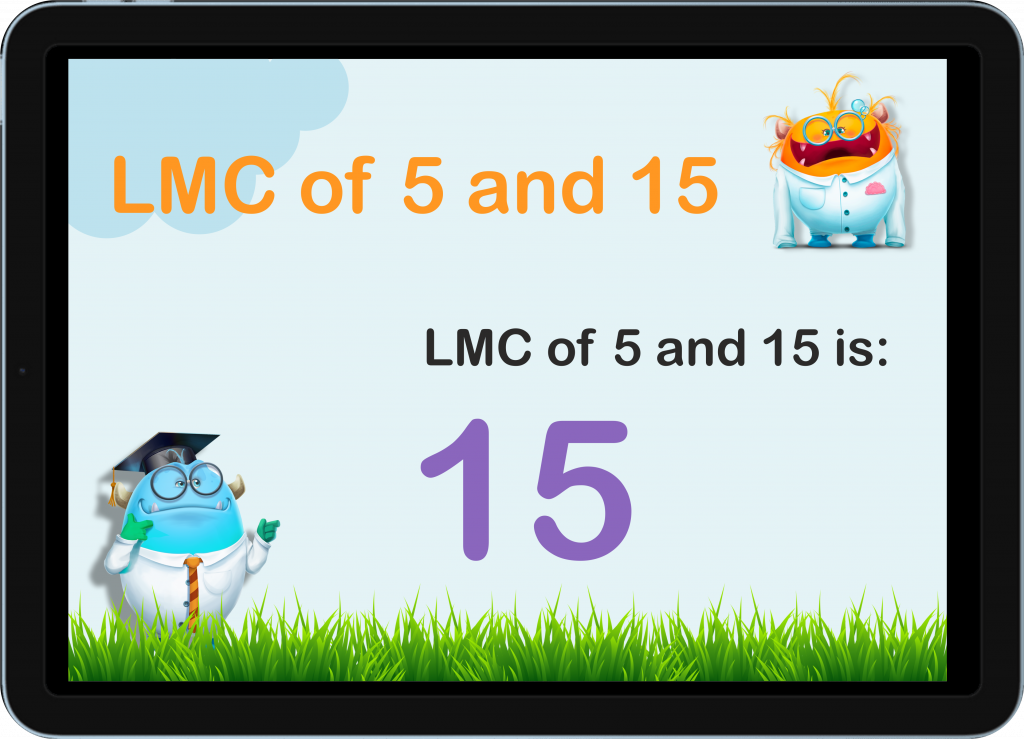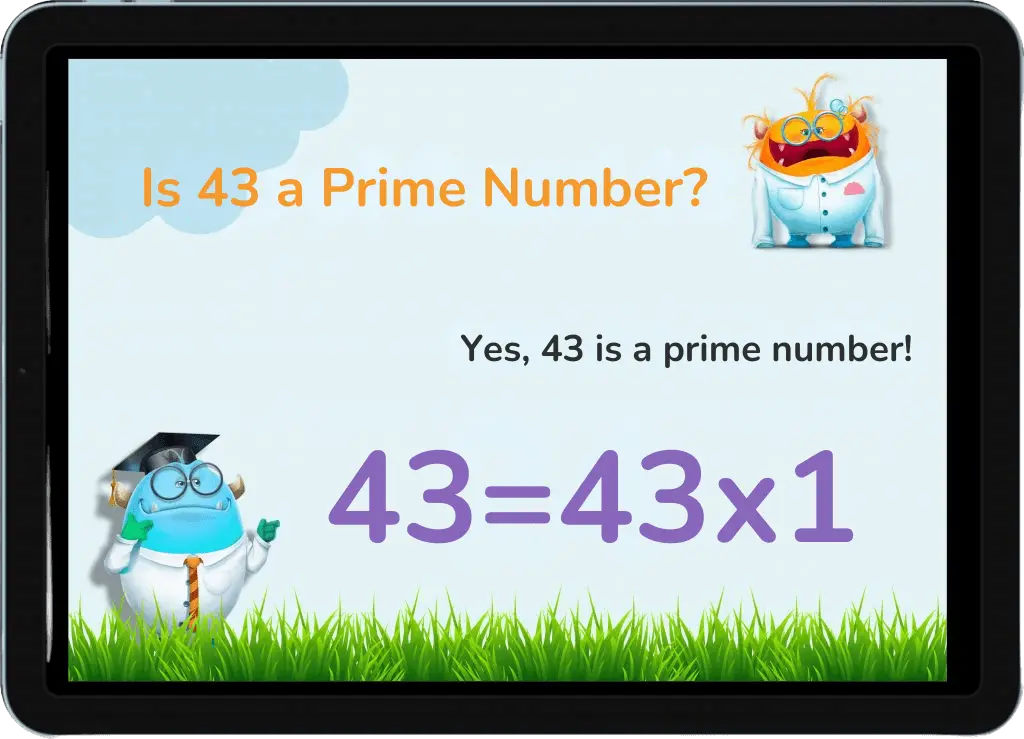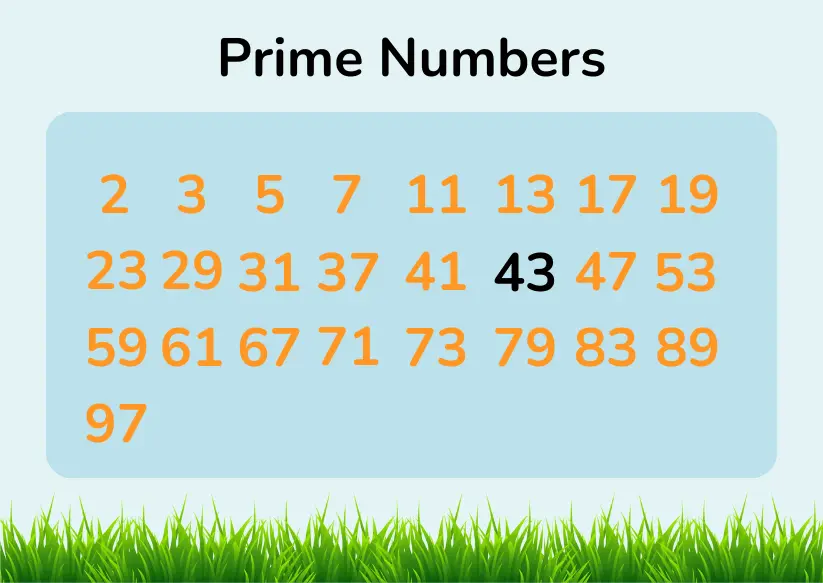Is 2 A Prime Number?
Prime vs. Composite Numbers
Greetings, young math enthusiasts! Today, let’s set sail on a mathematical voyage to determine if 2 is a prime number, and learn more about the difference between prime and composite numbers.

Is 43 a Prime Number?
Or Is 43 a Composite Number?
Yes, you were right. 43 is, in fact, a prime number! It’s also an odd number, a twin sibling, it’s the smallest prime number that is not a ‘Chen prime’ and a lot more. Join us and we’ll tell you everything you need to know.


No credit card required

No credit card required
What are Prime Numbers?
Is 43 a Prime Number?
Double-check if 43 is a Prime Number
Further Math Inspection
What is So Special About the Number 43?
Is 43 a Twin Prime?
Is 43 a Sexy or Cousin Prime?
Is 43 a Composite Number?
Have you ever marveled at the mysteries hidden within numbers? Prime numbers are the rare treasures of mathematics, unique and fascinating. Today, we’ll delve into the intriguing world of the number 43. Are you excited to join us? We bet you are!
First, what are Prime Numbers?
Before we get started, let’s understand why prime numbers are so special. A prime number is one that can only be divided by 1 and itself, leaving no remainder. Think of prime numbers as the anonymous Tik-Tokers of the number world; they only have two “followers”: 1 and themselves. Examples include 2, 3, 5, 7, and 11. What makes them stand out is that they can’t be divided evenly by any other numbers.
Prime numbers are the foundation of mathematics, much like building blocks for numbers. Just as you can construct anything with a few types of blocks, you can form any number using prime numbers!
Is 43 a Prime Number?

Yes, 43 is a prime number. It can only be divided evenly by 1 and itself without leaving a remainder. This means 43 has no divisors other than 1 and 43. Thus, it qualifies as a prime number.
Let’s Double-check if 43 is a Prime Number
Let’s determine if 43 is indeed a prime number. We need to verify that 43 cannot be divided evenly by any number other than 1 and itself. Here’s the process:
Is 43 divisible by 2? No, because 43 is an odd number, so it can’t be divided by 2.
Is 41 divisible by 3? Add the digits of 43 (4 + 3), which equals 7. Since 7 is not divisible by 3, 43 isn’t either.
Is 43 divisible by 5? No, because it doesn’t end in 0 or 5.
Since 43 isn’t divisible by 2, 3, or 5, and there are no other smaller numbers to check, we can confidently say that 43 can only be divided by 1 and itself. Congratulations, 43, you are a prime number!
Further Mathematical Inspection
Now, let’s confirm this. We’ve already checked the smaller numbers, but there’s a method called “trial division.” This technique involves dividing 43 by all prime numbers less than its square root. The square root of 43 is approximately 6.6, so we only need to check the primes 2, 3, and 5.
43 ÷ 2 = 21.5 (not a whole number)
43 ÷ 3 = 14.33 (not a whole number)
43 ÷ 5 = 8.6 (not a whole number)
Since none of these divisions result in whole numbers, it confirms that 43 is indeed a prime number.
What is So Special About the Number 43?
Numbers often have interesting stories, and 43 is no exception. Here are some cool facts about 43:
Here are seven fun facts about the prime number 43:
- Twin Prime: 43 is a twin prime, pairing with 41. Twin primes are pairs of prime numbers that differ by 2.
- Sum of Different Primes: 43 is the smallest prime number that can be expressed as the sum of 2, 3, 4, or 5 different primes, such as 43 = 41 + 2 or 43 = 11 + 13 + 19.
- Wagstaff Prime: It is the third Wagstaff prime, which is a type of prime number of the form (2^p + 1) / 3.
- Centered Heptagonal Number: 43 is also a centered heptagonal number, meaning it can be arranged in a pattern of seven-sided polygons.
- Heegner Number: 43 is a Heegner number, which has implications in number theory and the study of quadratic fields.
- Unique Prime Property: It is the smallest non-palindromic prime where subtracting its reverse results in a perfect square (43 – 34 = 9, which is 3^2).
- Largest Non-McNugget Number: 43 is the largest number that cannot be represented as a combination of McNugget numbers, which are the possible totals of McNuggets in packs of 6, 9, and 20
Is 43 a Twin Prime?
Again, yes, 43 is a twin prime. It pairs with 41, another prime number, as they differ by only 2. This pairing makes them a classic example of twin primes
Is 43 a Sexy or Cousin Prime?
Yes, 43 is a sexy prime. It forms a sexy prime pair with 37, meaning they differ by 6. If they differ by 6, then they make a sexy prime. Right, how funny is that?
However, 43 is not a cousin prime. Cousin primes are pairs of primes that differ by 4, and 43 does not have such a prime pair. Therefore, while 43 is a sexy prime with 37, it does not qualify as a cousin prime.
Is 43 a Composite Number?
No, 43 is not a composite number. Composite numbers have more than two divisors, whereas 43 can only be divided evenly by 1 and itself. This makes 43 a prime number, not a composite one. Therefore, 43 is part of the set of prime numbers, which have exactly two distinct positive divisors.
Conclusion
Smartick offers fantastic free learning courses where you can dive deep into the world of prime numbers and so much more. It makes math fun and engaging, turning learning into a playful adventure. With interactive lessons and games, Smartick ensures that math is not only educational but also enjoyable.
You’ll find yourself looking forward to each session as you explore new mathematical concepts in a captivating way.
What are you waiting for? Give it a try and see if you find math much more exciting!
Learn More About Prime Numbers
© 2024 Smartick. All Rights Reserved.
